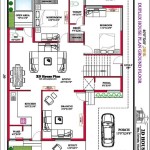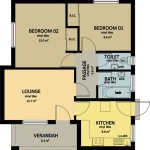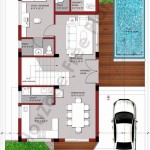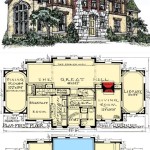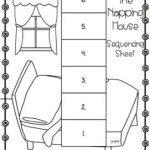Unique Small Home Floor Plans: Maximizing Space and Style
The increasing popularity of small home living has fueled a demand for innovative and unique floor plans that maximize space, functionality, and style. These plans often challenge traditional notions of home design, focusing on efficient layouts, multi-purpose spaces, and creative storage solutions. The term "small home" generally refers to dwellings under 1,000 square feet, requiring careful consideration of every square inch to ensure comfortable and practical living.
Designing a small home requires a strategic approach, prioritizing the needs and lifestyle of the occupants. More than just minimizing square footage, it's about optimizing the flow of movement, creating visual openness, and incorporating smart design elements that enhance the overall living experience. Several key factors influence the success of a small home floor plan, including the use of open-concept designs, vertical space exploitation, and integration of adaptable furniture.
Open-Concept Living and Multi-Functional Spaces
Open-concept floor plans are a cornerstone of small home design. By eliminating or minimizing walls between the living room, kitchen, and dining areas, a sense of spaciousness and connectivity is achieved. This design philosophy encourages natural light flow throughout the home and allows for flexible use of the available space. The absence of rigid divisions also facilitates social interaction and creates a more inclusive environment.
Within an open-concept layout, careful zoning is essential. This can be achieved through the strategic placement of furniture, the use of area rugs to define individual spaces, and variations in flooring materials. For example, a kitchen island can serve as a visual barrier between the kitchen and living area, while also providing additional counter space and seating. Similarly, a strategically placed bookshelf can delineate a reading nook within the living room without completely isolating it.
Multi-functional spaces are another crucial element of small home design. Rooms should be designed to serve multiple purposes, adapting to the changing needs of the occupants. A guest room can double as a home office, equipped with a Murphy bed that folds away when not in use. A dining table can also function as a work surface, and living room seating can incorporate hidden storage compartments. This adaptability allows the small home to accommodate a variety of activities without feeling cramped or cluttered.
Innovative storage solutions are vital to maintaining the functionality of multi-purpose spaces. Built-in shelving, hidden compartments, and modular furniture can help to maximize storage capacity without sacrificing valuable floor space. Vertical storage, such as tall cabinets and wall-mounted shelves, is particularly effective in small homes, utilizing the full height of the walls to store belongings.
Exploiting Vertical Space and Creative Loft Designs
In small homes, maximizing vertical space is paramount. Utilizing the height of the walls not only increases storage capacity but also creates a sense of expansiveness. High ceilings are a desirable feature in small homes, as they allow for the incorporation of lofts and mezzanines, effectively adding square footage without expanding the building's footprint.
Loft spaces can serve a variety of purposes, depending on the needs of the occupants. They can be used as bedrooms, home offices, reading nooks, or even guest rooms. Access to lofts is typically via a ladder or a compact staircase, which should be carefully designed to minimize its impact on the lower level. Spiral staircases and alternating tread stairs are popular options for small homes, as they take up less floor space than traditional staircases.
The design of a loft should take into consideration the available headroom and natural light. Adequate headroom is essential for comfort and functionality, particularly in sleeping lofts. Skylights and strategically placed windows can bring natural light into the loft space, making it feel more open and inviting. Proper ventilation is also crucial to ensure comfortable temperatures, especially during warmer months.
Beyond lofts, simple strategies like floor-to-ceiling shelving units can make a big impact on storage and the visual appeal of a small home. Displaying visually interesting items, such as books, plants, and artwork, can further enhance the aesthetic appeal of these tall storage solutions. These elements not only provide practical storage but also contribute to the overall design and personality of the space.
Adaptable Furniture and Smart Home Automation
The selection of furniture is critical in a small home. Adaptable furniture, which can serve multiple purposes or be easily reconfigured, is essential for maximizing space and functionality. Sofas that convert into beds, tables that fold down from the wall, and chairs that can be stacked when not in use are all examples of adaptable furniture that can make a significant difference in a small space.
Modular furniture systems are another valuable tool in small home design. These systems consist of individual components that can be arranged and rearranged to suit the changing needs of the occupants. Modular sofas can be configured as a traditional sofa, a sectional, or even individual chairs. Modular storage units can be customized to fit specific spaces and storage requirements.
Smart home automation can also play a role in maximizing space and efficiency in a small home. Automated lighting systems can be programmed to turn on and off automatically, saving energy and reducing clutter. Smart thermostats can be programmed to adjust the temperature based on occupancy, further reducing energy consumption. Voice-controlled assistants can be used to control various functions in the home, freeing up hands and simplifying daily tasks.
Furthermore, consider built-in furniture. This could include window seats with hidden storage, custom-built shelving, or a platform bed frame with drawers underneath. These solutions often make the most of otherwise unused space while blending seamlessly into the overall design. It is also important to consider furniture scale and proportions. Overly large or bulky furniture can quickly overwhelm a small space.
Choosing furniture with clean lines and a minimalist aesthetic can help to create a sense of openness and visual harmony. Light colors and reflective surfaces can further enhance the feeling of spaciousness. Opting for furniture with a low profile can also help to prevent the space from feeling crowded.
These considerations influence the overall livability of the space. Ultimately, the best small home floor plan is one that is tailored to the specific needs and lifestyle of the occupants, maximizing space, functionality, and style.
Effective small home design balances aesthetics with practicality. It requires careful planning, innovative design solutions, and a commitment to maximizing every square inch of available space.

Modern Style On A Budget 10 Tiny Cool House Plans Houseplans Blog Com

10 Small House Plans With Open Floor Blog Homeplans Com

27 Adorable Free Tiny House Floor Plans Small Cottage

Affordable Modern Style House Plan 7558 Solo

Modern Style On A Budget 10 Tiny Cool House Plans Houseplans Blog Com
10 Small House Plans With Open Floor Blog Homeplans Com

Small Home Plan With 3 Bedrooms House Floor Plans Bungalow Simple

These Small House Plans Pack A Lot Of Punch Houseplans Blog Com

Small House Plan Ultra Modern Plans For Arizona Floorplans

Small Single Story House Plan Fireside Cottage

